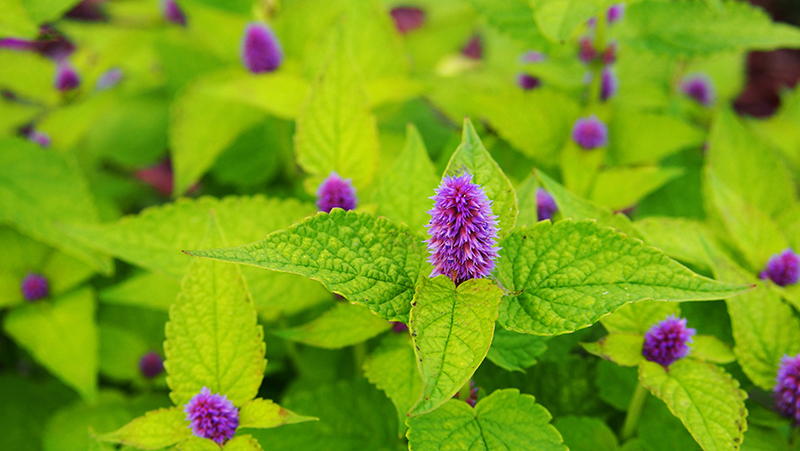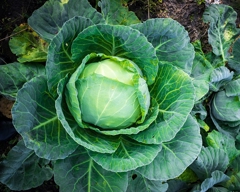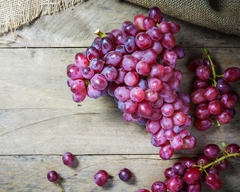Yates Account
Join now
Create a Yates account today!
Sign up to join the Yates Garden Club for monthly e-mails packed with seasonal inspiration, tips for success & exclusive promotions.
Plus if you’re a Garden Club member you can take part in the Yates Growing Community - a blog to share successes, get advice & win prizes in fun challenges along the way!

Forgot password
Enter the email address associated with your account, and we'll email you a new password.

A member of the mint family and native to Mediterranean areas, Hyssop officinalis is an aromatic, bushy, perennial herb growing to a height of about 60 cm. The dark green, narrow leaves have a slightly bitter, sage - minty taste and used sparingly will add flavour to soups, stews and fatty meats. The small, blue flowers produced in late summer are not only a lovely feature and can be used as a garnish in salads, but double up as a bee and butterfly attractant, making hyssop a wonderful companion plant.
How to grow hyssop in a garden
- Choose a sunny position in the garden.
- Turn the soil over well and incorporate Yates Thrive Natural Blood & Bone with Seaweed to provide slow release nutrients to the plants as they establish.
- Remove the plants from their containers, gently tease the roots and cut away any circled or tangled roots.
- Backfill with enriched soil, gently firming down. Water in well afterwards.
- After the initial water, water the plants regularly until they establish.
- Feed in spring and autumn with Yates Thrive Natural Blood & Bone with Seaweed to promote healthy foliage, strong root development and abundant flowers.

How to grow hyssop in a pot
- Choose a sunny position outdoors.
- Fill a pot with Yates Premium Potting Mix as this has been specially formulated to suit these plants.
- Remove the plants from their containers, gently tease the roots and cut away any circled or tangled roots.
- Position the plant in the centre of the pot and backfill with potting mix, gently firming down. Water in well afterwards.
- After the initial watering, water the plants regularly allowing the plants to dry out slightly until the next watering.
- Feed in spring and autumn with Yates Thrive Natural Blood & Bone with Seaweed, but if the pots are located close to living areas, apply Yates Thrive Natural Fish Seaweed+ Plant Food Concentrate instead. Fertilise every 2 weeks to promote healthy foliage growth, strong root development and abundant flowers.
Growing Tips
- After flowering, prune the shrub lightly to encourage a more compact habit.
- For a constant supply of this herb, replace this plant every five years by propagating seed or cuttings.
- Plant near, but not too close to these plants as this herb’s aromatic scent is reputed to repel white cabbage moth and flea beetles.
More Plants
Vietnamese Mint is an evergreen perennial herb, popular throughout Asia. The peppery tasting leaves are great for garnishing and flavouring salads, soups and stews.
Lemon Balm
Lemon Balm is a pungent, attractive herb that can infuse and uplift your tea or why not add a couple of fresh leaves to garnish desserts and garden salads.
Hyssop
Hyssop is an aromatic, bushy, perennial herb. The dark green, narrow leaves have a bitter/sage/minty taste that will add flavour to soups & stews.
Basil
Basil is a deliciously fragrant, quick growing herb that pairs perfectly with tomatoes, garlic and lemon.
Recommended products
Yates Thrive Natural Blood & Bone with Seaweed
A certified organic garden input boosted with NZ Seaweed to gently nourish plants, enrich the soil and encourage a strong healthy root system.
Yates Thrive Natural Fish & Seaweed+ Plant Food Concentrate
A complete plant food enriched with natural fish, seaweed, humates, molasses and more - boosted with NPK to improve plant and soil vitality.
Yates Premium Potting Mix
A premium potting mix, ideal for all potted plants and shrubs, including ornamentals, fruit trees, vegies and herbs.

















Share
Share this article on social media